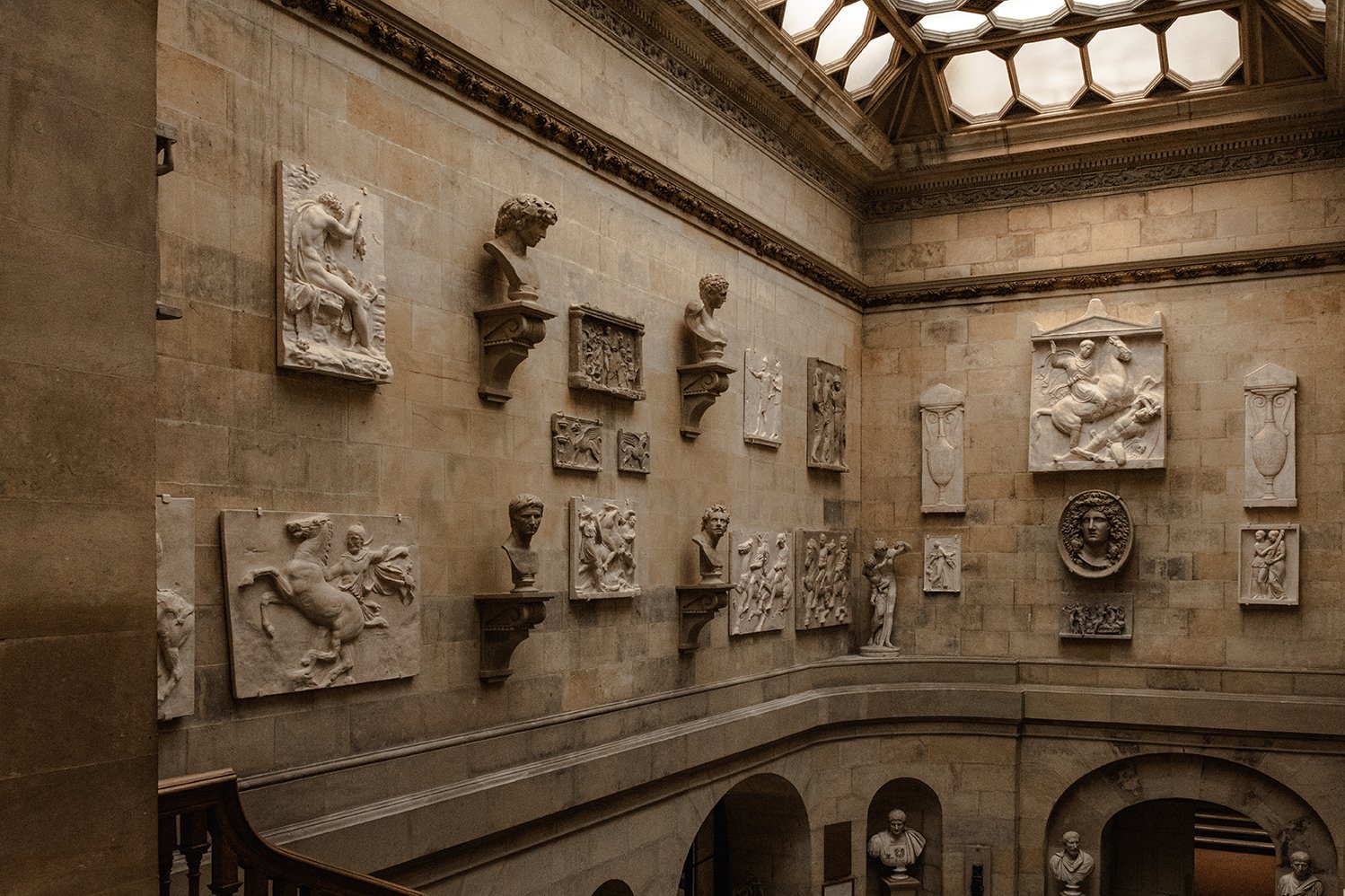Brace yourself for a picture-heavy post, because choosing just a few images would have meant you missing out…
A couple of weeks ago I was invited to Castle Howard to view the results of their extensive restoration and renovation. I took quite a few pictures “on the hoof” with my smaller Fuji camera, rather than as a professional assignment (I will be going back for that in a couple of weeks!) which I really wanted to share with you. Because those interiors are grand, magical, incredibly beautiful and simply awe-inspiring.
The Grand Staircase was created in the 1870s and today continues to provide an impressive first impression for visitors. Following the re-hang, visitors will immediately be introduced to the Grand Tour history of the house, with antique sculptures and artefacts collected by the 4th and 5th Earls on their travels, displayed alongside a series of newly commissioned plaster casts and busts.
Whilst I’m usually not too bad at writing, there’s no point in my trying to re-write all the information I have been given since I a) lack the insider knowledge and b) couldn’t put it all in words any better than the people “in the know”. So most of the words here are directly from the horse’s mouth Castle Howard. I hope you enjoy the post.
Castle Howard is a stately home in North Yorkshire, England, 15 miles north of York. Set in the Howardian Hills National Landscape, it has been home to the Howard family for more than 300 years.
Following a major renovation of its historic interiors, Castle Howard’s 21st Century Renaissance is now open to the public. It includes the unveiling of its lost Tapestry Drawing Room, which has been restored to its original 18th-century splendour for the first time since a devastating fire in 1940.
Visitors will also be able to see the renovated Long Gallery and Grand Staircase and a complete rehang and redisplay of Castle Howard’s collection of paintings, sculptures and tapestries. The work is revealed prior to the 300th anniversary of Sir John Vanbrugh’s death in 2026.
The house, perhaps the best example of the English Baroque style, was conceived in 1699 by Sir John Vanbrugh and Nicholas Hawksmoor for Charles Howard, 3rd Earl of Carlisle. Vanbrugh and Hawksmoor died before the house was finished, and the plans evolved under different talents; the Palladian west wing was completed by Sir Thomas Robinson in the 1750s, the neoclassical interior of Long Gallery was designed by Charles Heathcote Tatham in the 1810s, and the Arts and Crafts style decoration of Chapel was undertaken in the 1870s, with stained glass made by Edward Burne-Jones.
Castle Howard is Britain’s most famous country house, recognised by millions across the world as the location for Brideshead Revisited and Bridgerton. It is set in one thousand acres of sweeping parkland filled with statues, temples, lakes and fountains, and is one of the most historically significant houses in Europe. Castle Howard has been home to nine generations of the Howard family across three hundred years, with each contributing to its creation, evolution, and preservation.
A devastating fire in 1940 destroyed the iconic dome and more than 20 rooms in the house whilst it was being used as a girls’ school during the Second World War. Upon his return from war, George Howard made the decision to keep the house and estate in family ownership and he embarked on the restoration of the house, which in 1952 opened to the public. He restored the dome in 1962, and the filming of Brideshead Revisited two decades later enabled the reconstruction of the Garden Hall and New Library.
The restoration work is being continued by the present generation of custodians, Nicholas and Victoria Howard, with work led by architect Francis Terry and designers Remy Renzullo and Alec Cobbe. The completed projects champion traditional heritage skills, from architectural design to plastering, joinery, and painting, as well as demonstrating the sympathetic introduction of modern utilities in historic interiors. Specialist contractors have included Philip Gaches for plasterwork, Hesp & Jones for decoration, Houghtons of York for joinery, Clunie Fretton for carving, Alison Stanton for tapestry conservation, and Mark Fitzgerald for furniture.
The Tapestry Drawing Room was gutted by the fire of 1940 and has remained a shell ever since. Visitors will be able to see the fully restored and redecorated space, with the tapestries that originally hung in the room returned to their original positions for the first time since since the beginning of the 18th century. The four tapestries were woven for the room in 1706 by John Vanderbank and depict ‘The Four Seasons’ in scenes taken from the work of David Teniers.
The Long Gallery has once more become a great showcase of Castle Howard’s art collection. It contains Italian and Grand Tour paintings, including the noted Pannini capriccios of Rome commissioned by the 4th Earl, counterbalanced with eighteenth-century views of Castle Howard. Portraits of previous generations of the Howard family, including works by Kneller, Lely and Hoppner, are displayed throughout the gallery.






























